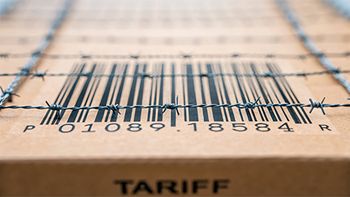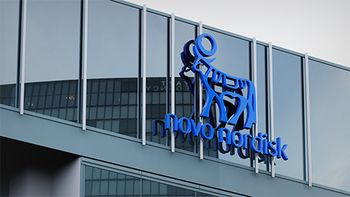
- Pharmaceutical Commerce - October 2023
- Volume 18
- Issue 5
Reshaped Priorities Pave Cold Chain Path
How recent advancements in practice and technology have ushered in a new era of pharmaceutical logistics.
In today’s increasingly interconnected world, the pharmaceutical industry is heavily reliant on efficient cold chain logistics and management to ensure temperature-sensitive products reach their destinations in perfect condition.
A study carried out by the University of St. Gallen in Switzerland, a center of supply chain studies, found that the transport of temperature-sensitive pharmaceutical products often failed to fully satisfy the necessary quality requirements. The study showed that temperature deviations resulted in complete loss of goods in about one third of cases, leading to additional costs along the entire pharmaceutical transport chain.
Furthermore, drug manufacturers are facing increasing challenges due to the rising value of pharmaceuticals and the growing complexity of biologics production.
To navigate these challenges effectively, biopharma organizations must prioritize three key areas:
1. The reliability of the cold chain. Ensuring that temperature-sensitive products are consistently stored and transported within the specified temperature range is paramount to maintaining their efficacy and safety.
2. Visibility. Real-time monitoring and intervention capabilities are essential for preserving temperature integrity throughout the supply chain. This means that companies need to have the ability to track the temperature of pharmaceuticals and intervene promptly if deviations occur to prevent potential spoilage or loss of product. In addition to enhanced visibility, automation plays a critical role in addressing potential risks swiftly. Automation technologies can help in quickly resolving any issues or disruptions in the cold chain, ensuring that medicines reach their destinations in optimal conditions.
3. The push for sustainability. Pharmaceutical companies need to adopt environmentally friendly practices and take steps to reduce their carbon footprint in their cold chain operations. The pharma industry has been estimated to generate around 52 megatons of CO2e annually. According to the World Economic Forum, around 40% of supply chains’ emissions could be reduced with already available solutions. Perhaps the best one is the adoption of innovative reusable containers to avoid fees for one-way systems disposal, which will be introduced to encourage environmentally responsible practices. The total cost of ownership of the future will encompass not only logistics but also factors such as CO2 pricing and disposal fees.
Technologies that are gaining momentum
The majority of temperature-sensitive medications are still transported using low-tech, single-use packaging, such as cardboard and Styrofoam containers loaded with dry ice or cold bricks. Traditional methods like these have limitations in preserving a product’s integrity and efficacy, and can put goods at risk should unexpected delays occur. The impact of this is significant. Not only can it have worrying consequences for the patients on the receiving end of the medication, but any goods suspected of incurring a temperature excursion will be consigned to waste.
When it comes to the pharma industry, the IQVIA Institute for Human Data Science notes that failures in the supply cold chain alone cost the industry an estimated $35 billion annually. To overcome these challenges and limitations of traditional shipping methods, pharma companies are increasingly turning to novel temperature-controlled solutions. Recent advancements in technology have ushered in a new wave of temperature-controlled freight tools and real-time data monitoring.
These solutions are a big step forward in the pharma supply chain industry. They incorporate robust insulation and advanced cooling systems, capable of withstanding extreme external conditions, while maintaining the precise temperature ranges required by specific products. This significantly reduces the risk of temperature excursions and product spoilage.
Additionally, emerging technologies like graphene energy distribution systems are pushing the boundaries of cold chain container performance. They not only extend the independent runtime but also reduce their overall weight, making them more efficient and environmentally friendly.
Real-time data monitoring is also transforming pharma logistics for the better. Integrating sensors and advanced tracking technologies within temperature-controlled containers allows companies to monitor highly critical operational parameters, such as humidity and temperature.
Constant surveillance enables organizations to promptly detect any unexpected shifts from the ideal conditions necessary for a product’s viability. This timely identification empowers them to take immediate, proactive measures. Enhancing visibility, transparency, and accountability
throughout the entire transportation process can better help guarantee the safe and secure delivery of temperature-sensitive pharmaceuticals to any point on the globe.
These monitoring solutions should only become more accurate and efficient, driven by the continuous emergence of innovative technologies. Notably, the transition from short-range Bluetooth Low Energy to long range connectivity represents a significant advancement, allowing companies to acquire data over extended distances. The shift toward low-cost embedded sensors and tracking devices operating on minimal energy will also further enhance monitoring capabilities and reach.
Additionally, the growing adoption of software-as-a-service (SaaS) solutions means companies can effectively monitor shipments, quantify CO2 emissions, and even simulate potential supply chain risks. This technological evolution holds the potential to significantly impact how businesses track and optimize their operations, creating a more sustainable and efficient future.
The power of data in optimizing the pharma supply chain
The data-driven approach to cold chain management is reshaping the pharma industry, and it extends beyond just real-time monitoring. The integration of simulation data (S data) and real-time operational data (O data) enhances supply chain efficiency, enabling pharma companies to solve problems proactively and maintain the integrity of their products.
S data plays a pivotal role in predicting and preventing potential issues before they arise. It enables proactive actions to be taken by solving problems before they occur. By predicting potential disruptions, identifying optimal shipping routes, and preventively addressing challenges that could arise during transit, S data can help ensure the integrity of pharmaceutical products. On the other hand, real-time O data provides immediate visibility into the ongoing status of shipments, allowing for real-time monitoring and quick reactions to problems that occur. The availability of real-time O data collected through sensors and monitoring devices is critical to preventing exposure to harmful conditions and product degradation. The use of sufficient real-time operational and simulation data in conjunction at every stage of the supply chain can help drug manufacturers enhance their processes and optimize the entire supply chain.
Shaping the future of pharma logistics
The future of cold chain logistics is evolving rapidly and the pharma industry is at a pivotal moment. Businesses now recognize the critical need for efficient temperature-sensitive product transportation while embracing sustainability.
Through the adoption of innovative practices and technologies, the industry can better navigate disruptions, improve efficiency, and ensure the integrity of products while minimizing the environmental impact of its supply chain.
About the Author
Richard Ettl is the CEO and co-founder of SkyCell.
Articles in this issue
about 2 years ago
Pharmaceutical Commerce - October 2023 Issue (PDF)about 2 years ago
Taking Pharma's Temperatureabout 2 years ago
All About the Journeyabout 2 years ago
Drilling Down On Distributionabout 2 years ago
Affordability: Who's Responsible?about 2 years ago
Time to Ax Copay Accumulators?about 2 years ago
Return of Cash Pay for Drugsabout 2 years ago
The State of the Pharma Cold Chainabout 2 years ago
Counterfeit Meds: Fighting the Forgersabout 2 years ago
Fortifying Vaccine Supply ChainsNewsletter
Stay ahead in the life sciences industry with Pharmaceutical Commerce, the latest news, trends, and strategies in drug distribution, commercialization, and market access.




